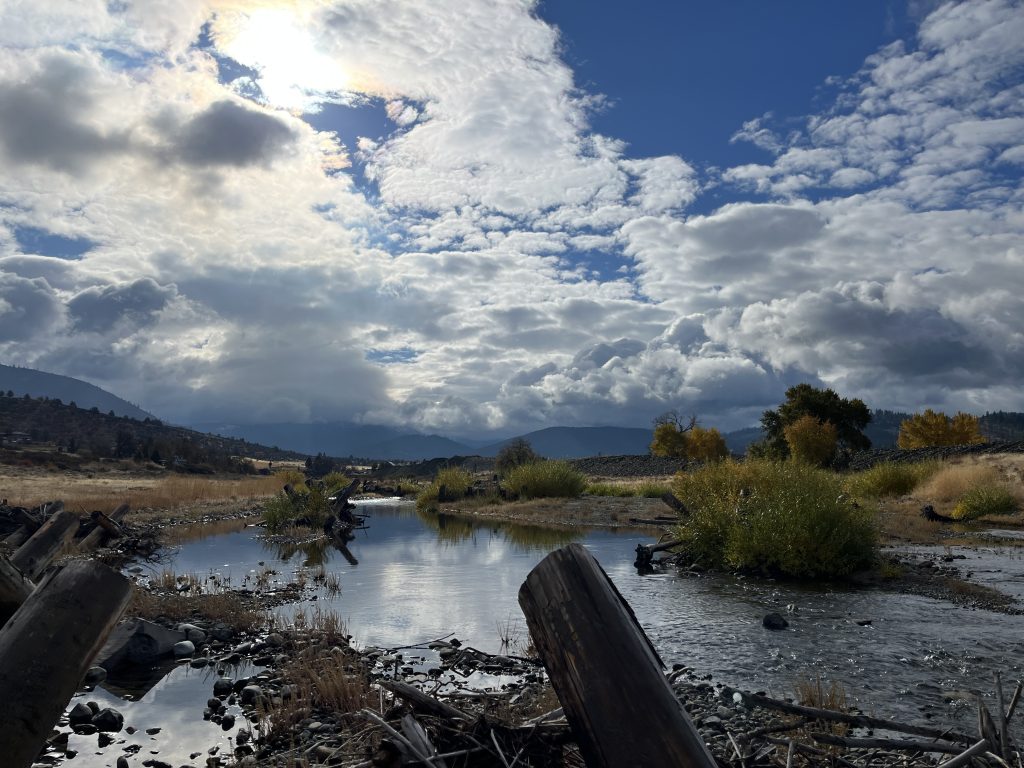In the fall of 2020, the first of several phases of work were completed at this location in the Scott River tailings to help bring some diversity and life back to this significantly altered landscape. Commonly referred to as the Scott River Tailings “Oasis” Restoration Project, SRWC has partnered with Cascade Stream Solutions, North Rivers Construction, and the Northern California Resource Center. Funding from the California Department of Fish and Wildlife and the United States Fish and Wildlife Service (USFWS) has supported this work with another phase of large wood structures and riparian planting scheduled for the fall of 2025. To see some of the change over time, please see the three series of photo points below. Also, here are some time lapse camera videos.
This habitat improvement project is designed to mitigate the legacy effects of dredge mining operations in the Scott River on access to high quality rearing habitat for juvenile salmonids and to restore natural river processes. Immediate benefits to juvenile coho salmon include access to critical off-channel winter and summer rearing habitat that connects to an area dominated by hyporheic flow and enhanced with the addition of instream structures. The reconnection and enhancement of off-channel habitat within the historic floodplain will also provide long term benefits by supporting channel processes such as deposition, channel migration, flooding, and wood recruitment that have been altered from land use activities.
The placement of large woody debris within the project reach will also influence aquatic habitat and stream geomorphic processes. Root wads will provide juvenile fish habitat complexity, cover from predators, and high velocity refuge. ELJs in the mainstem will work to increase pool formation, retain and sort streambed substrate and sediment, and work to recruit additional wood, all which help to maintain sediment transport equilibrium and provide gravel deposits favorable for spawning.
In 2025, SRWC and project partners are going to implement another series of phases, see map below.




